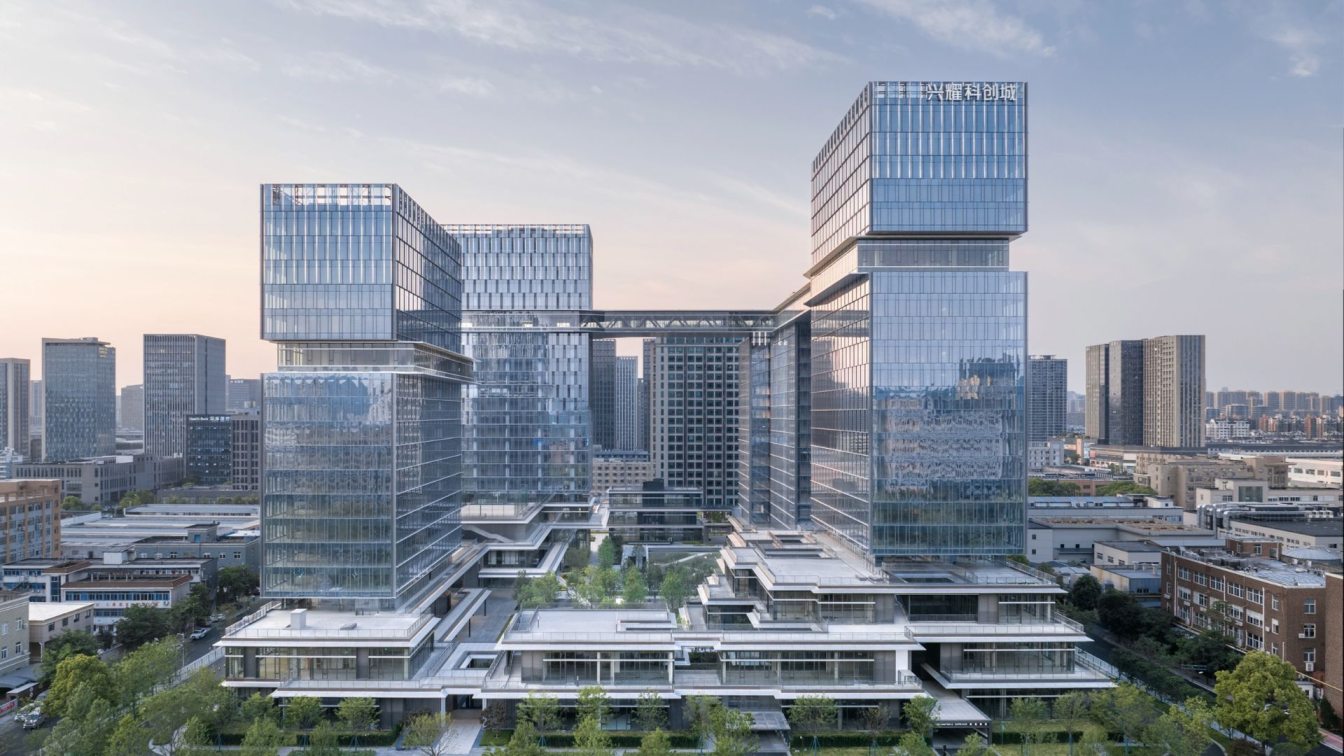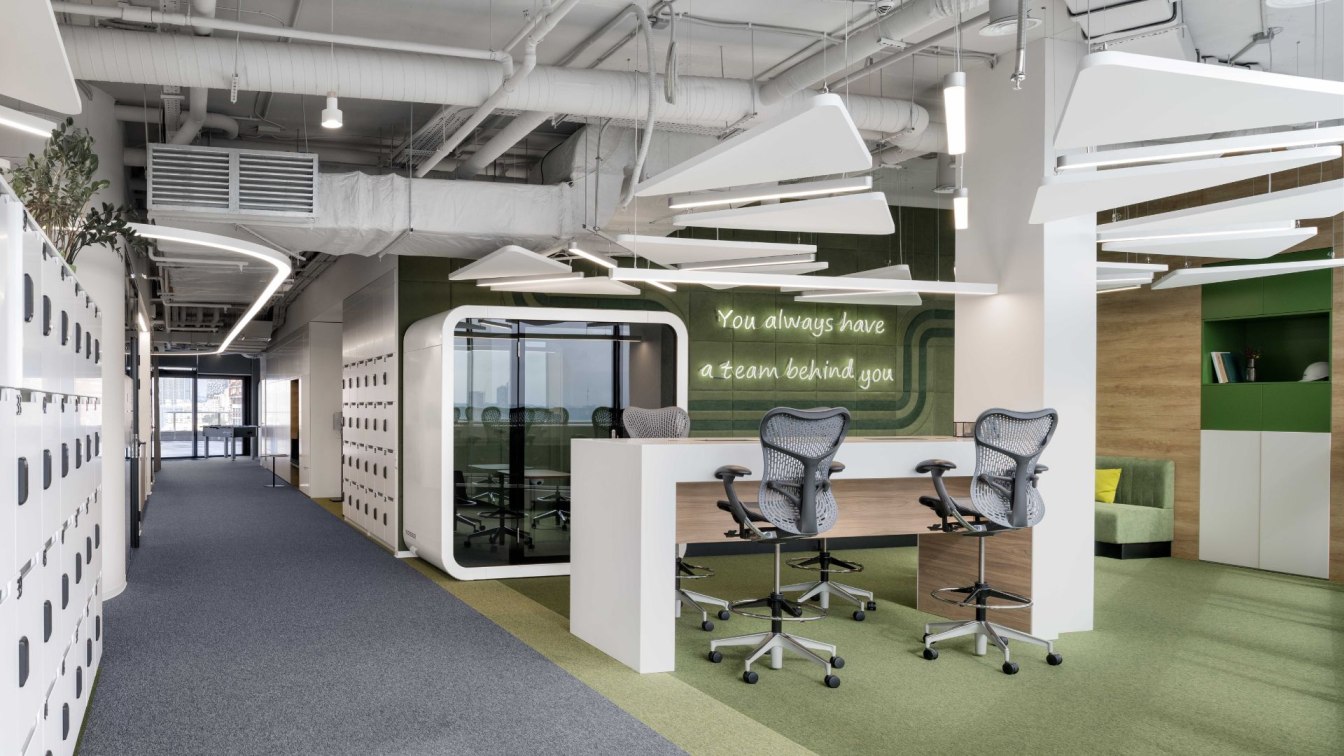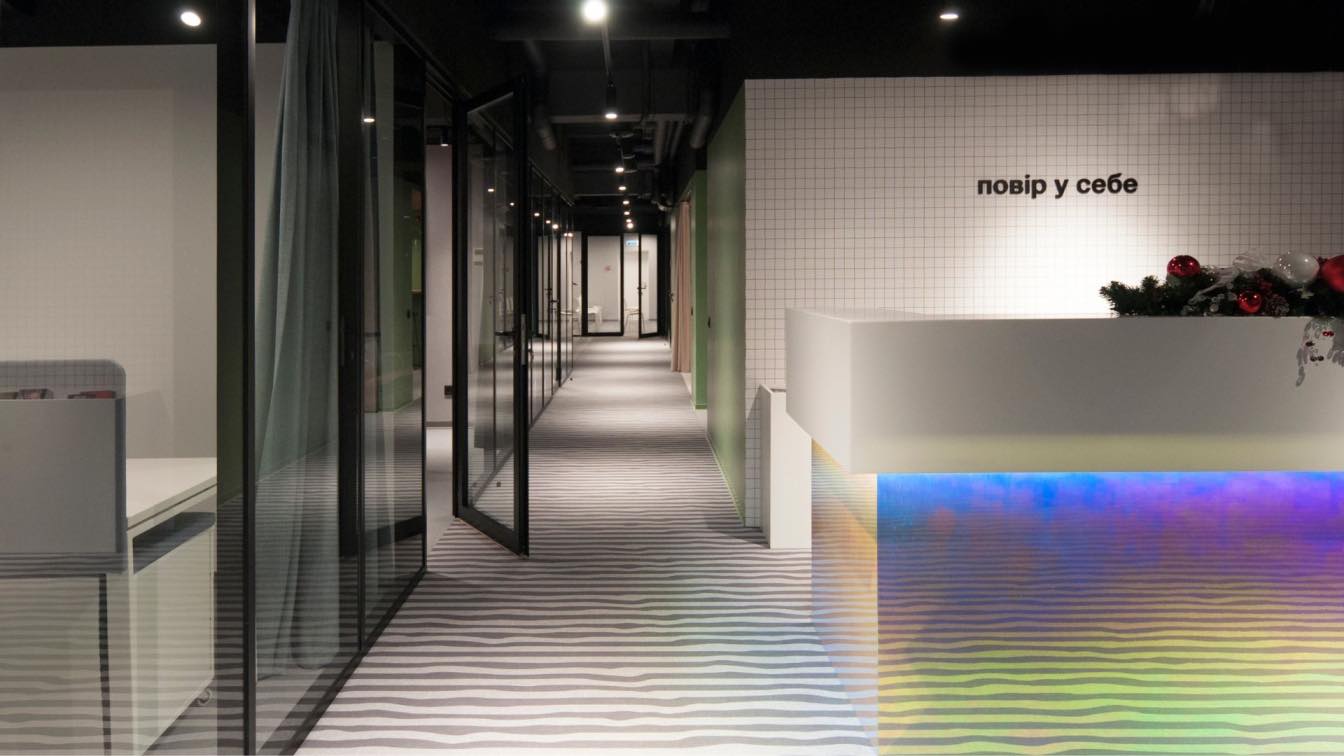gad: Xingyao Science and Innovation Park is located in Hangzhou Hi-Tech Zone, surrounded by many science and technology parks and industrial parks. Both sides of the Park are old industrial buildings built at the end of the last century and a small number of newly-emerging science and technology parks. The industrial space is relatively monotonous and there is no communication and leisure places. The urban service capacity is weak. The design of this project not only focuses on its internal office function. How to add positive and open urban spaces and interfaces to the surrounding area has become a key consideration in the design.
Open City Interface
The overall layout of the building combines with the regional environment, presenting a character opening to the city. Considering the main direction of pedestrian flow on the northwest side, the city entrance square is set up on the north side of the base and serves as the main image window of the park. It is spacious in the south of the base. There are already urban landscape resources such as water system and vegetation. A landscape garden is created on the south side to form a visual corridor extending to the south.
The design retains and remodels the original 17-story office building on the northeast side of the base and arranges three other high-rise main buildings to form an enclosed layout with the original old buildings. By connecting them through high-altitude corridors to create a sense of wholeness in the park, it forms a pattern of "dynamic north and static south". This large enclosure, large openings and large-scale processing techniques create an open and atmospheric architectural image in the urban interface, and also create a large-scale urban public activity space for urban residents.

Transparent Park Space
The inward space design of the park emphasizes the route choice of people in the building and the site, considers the multiple behavioral possibilities of users in the environment, and maintains the permeability and openness of the park. The gray space of the corridor connects all the courtyards, and the podium retreats form a number of air gardens where users can stay and rest, so that they can walk freely, forming a low altitude enclosed ecological strolling circle.
The ground floor podium continues the enclosed layout of the main building. Natural entrances and exits are formed between the building units. The greening of the ground floor plaza intertwines to form comfortable landscape spaces and roof gardens of different elevations, which form site elevation differences, break the dullness of the original topography, and provide pleasant resting spaces for the users of the park. The ground floor landscape which centers on the sunken courtyard offers a cohesive place of interaction. The flexible outdoor green space softly connects the building with the shared space, realizing the visual sensation of changing the landscape through different windows and staggered design and blurring the boundaries between indoor and outdoor landscapes.
Free Multi-tower Connected Structures
The design takes into account the freedom of activity of the users of the high-rise office space. The high-altitude corridor with L-shaped enclosing volume connects the three main buildings to form a multi-tower connecting structure, which provides the high-rise office with the best place to view the south side of the mountain and sufficient space for rest and activity. While the multi-tower structure effectively strengthens the overall sense of the park and provides abundant public space, it also brings about the problem of insufficient bearing capacity of the structural elements of the original north retained building. The design adopts effective means to reduce the amount of structural reinforcement as much as possible. The foundation adopts additional anchor static pressure piles and drilled piles, and the superstructure comprehensively applies various reinforcement means such as enlarging section, wrapping steel, and pasting carbon fiber composite material, so that the existing building meets the seismic performance requirements after the renovation.

Flexible Function Combinations
Each group of building volume is different from the other, forming a series of common but varying combinations of relationships and spatial characteristics. It responds to the flexible combination required by a variety of office status. In the low-rise podium, single office space with smaller volume is set up. The small-scale blocks are split and reorganized, and different spaces are created in overlapping and intersecting, forming an office space connecting the courtyards with terrace spaces. The large space above the podium with the main building independent of each other but are closely connected through the high-altitude corridors provides a place for medium and large-sized offices.
The flexibility of the public space allows the landscape, sunlight and air to penetrate into the interior, reinforcing the transparency of the space and giving people a comfortable and bright experience. Inside the building, foyers and corridors are used to borrow and frame the view. Shared spaces are set on each standard floor at excellent locations for employees to communicate, rest, watch the view, and engage in group activities. A large number of grey spaces blur the boundaries between indoor and outdoor spaces, and at the same time, make the connection between each space closer, which is conducive to the realization of the functional conversion, and can organize the spatial relationship in a more efficient and convenient way.
The presence of Xingyao Science and Innovation Park fills the blank fragment of urban public space in the area and brings a pleasant experience to the office and a new look to the urban interface.




























